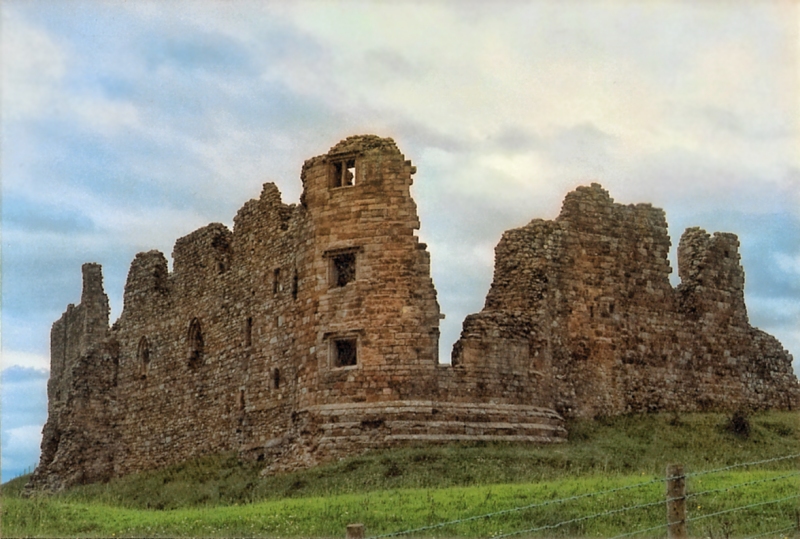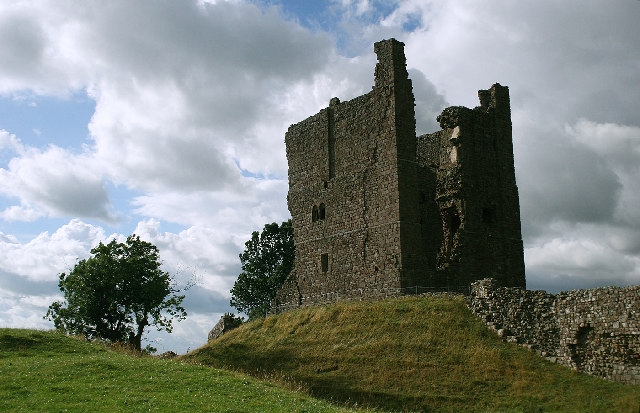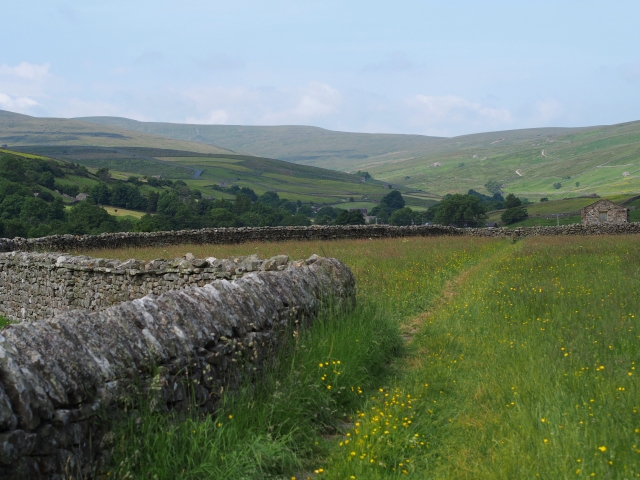
The scenery from Barnard to Brough tugs at my heart. So rugged, these fells and valleys. There's nothing like it in the United States, except perhaps the foothills of Colorado for the terrain, but not the colors. The greens are vivid against a pewter gray sky, the meadows seem to give off their own glow. Shaggy cream colored sheep, badly in need of shearing, cling to craggy hillsides. I imagine that this land remains largely unchanged over the centuries.
Spying the castle high up on a hill, we make the turn, soon finding ourselves driving up a steep incline and into narrow cobbled streets. Two young girls on horses trot in front of us, but there is no one else to be seen. Unlike the bustling town of Barnard Castle, Brough seems to be a sleepy little village.
We park in the only place we can find to park – a small area between two rows of houses, which all bear plaques with the quaint name of the house and gorgeous gardens in the front. Suddenly quiet and reserved, we make the walk along a path behind a farm and enter through the livestock gate. I think Dana and Robin are both as affected by the setting of this castle as I am. It's barbaric, wild, and so easy to picture it in the Middle Ages with its commanding view of the windswept hills and valleys.
The path winds through a field of sheep and cows who seem oblivious to our presence. We step through the arched entry of the gatehouse and into a cobbled courtyard. The rough sandstone paving is dappled with colorful lichens and moss. We are completely alone amid these entrancing ruins. The keep and tower rise on either side of us. There's something enigmatic about the atmosphere here. It seems bleak and desolate, slighted, almost forlorn. I embrace it, comfort it with my appreciation for it, tuck it into my heart.
Built on the site of a Roman fort, the oldest parts of Brough Castle date back to around 1100 when what is now northwest England had only just been annexed from the kingdom of the Scots. Passing to the Cliffords in 1268 it enjoyed a renaissance in the 17th century at the hands of Lady Anne Clifford, who ordered the restoration of the existing buildings and the construction of service buildings.
After Lady Clifford's death Brough was neglected. Throughout the first several decades of the 18th century the castle was pillaged. Its roofs and fittings were sold; its stones, lintels, staircase treads and pavements taken away and put to use elsewhere. In 1763 a good portion of the tower was demolished to provide stone for a mill.
Wandering back behind the keep we see a large piece of masonry lying where it has fallen in the field, who knows how long ago. Then Robin spies a newborn lamb by the river, which brings smiles to all of our faces. As we return to the courtyard, we have been joined by a family of three who nod their heads in greeting. There are still discoveries to be made here and we set about to do so. As we did at Barnard, we leave no nook or cranny unexplored before heading back to the car.

Brough Castle is a ruined castle in the village of Brough, Cumbria, England. The castle was built by William Rufus around 1092, within the old Roman fort of Verterae, to protect a key route through the Pennine Mountains.
The initial motte and bailey castle was attacked and destroyed by the Scots in 1174 during the Great Revolt against Henry II. Rebuilt after the war, a square keep was constructed and the rest of the castle converted to stone.
Read more about Brough Castle on Wikipedia.

Cumbria is a ceremonial and non-metropolitan county in North West England. Cumbria's county town is Carlisle, in the north of the county, and the only other major urban area is Barrow-in-Furness on the southwestern tip of the county.
Cumbria is the third largest county in England by area, and is bounded to the north by the Scottish council areas of Dumfries and Galloway and Scottish Borders, to the west by the Irish Sea, to the south by Lancashire, to the southeast by North Yorkshire, and to the east by County Durham and Northumberland.
Read more about Cumbria at Wikipedia.